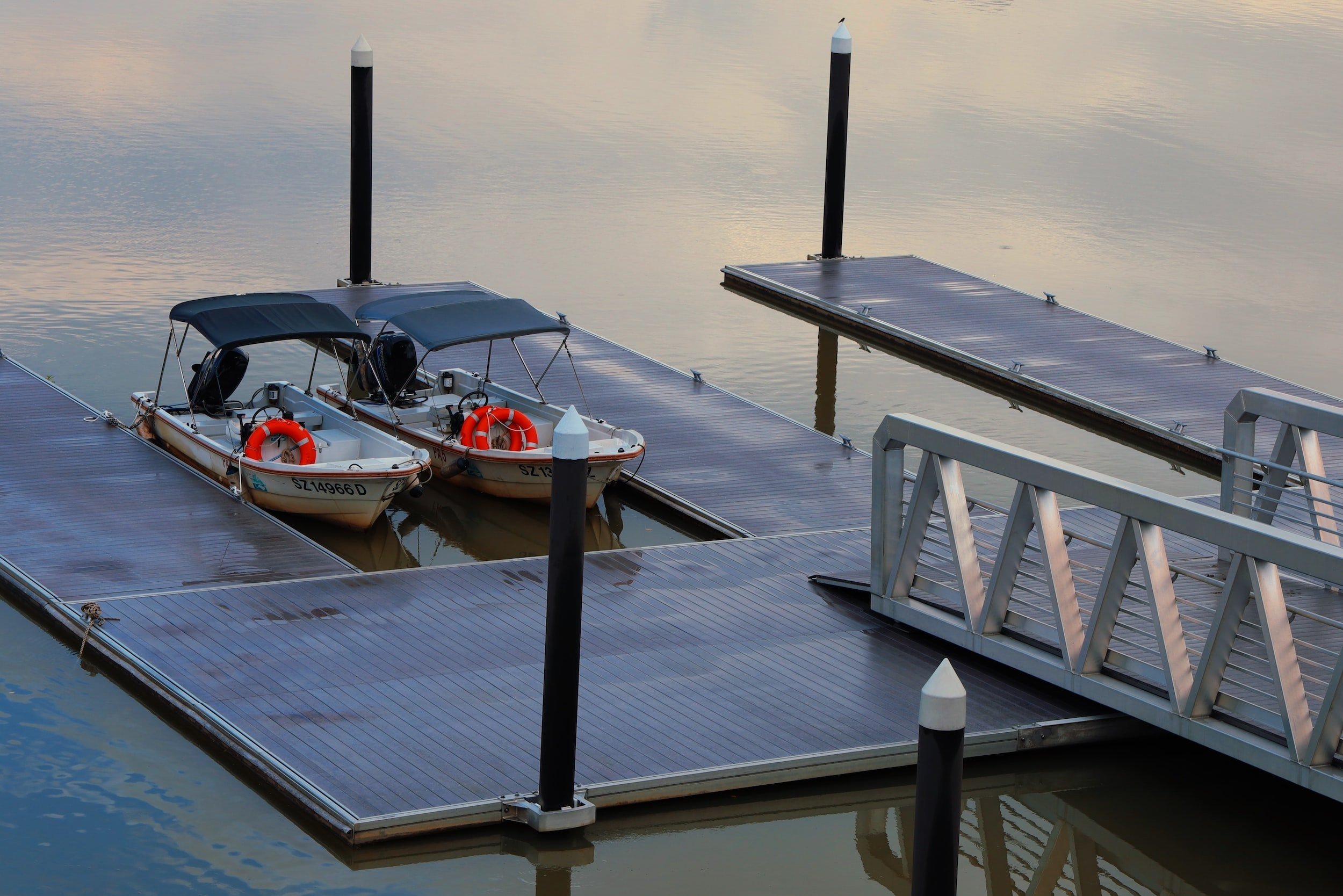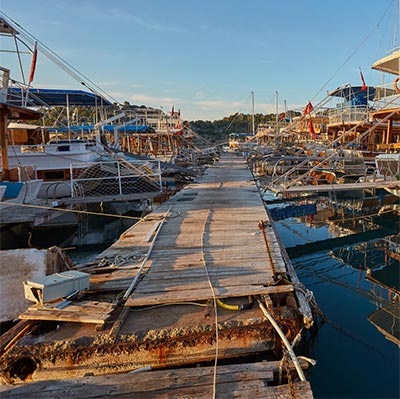Specialist Insights on Resilient Dock Repairs Solutions
Specialist Insights on Resilient Dock Repairs Solutions
Blog Article
Efficient Dock Repair Techniques: Guaranteeing Structural Honesty
Making sure the architectural honesty of anchors with efficient repair service methods is vital for the longevity and safety of aquatic facilities. This includes a multi-faceted method starting with comprehensive examinations making use of innovative innovations like sonar devices and remotely ran lorries (ROVs) to identify both noticeable and hid damages. Subsequently, picking the right repair work materials, such as composite materials and corrosion-resistant alloys, is critical for longevity. Architectural support techniques, including the execution of cross-bracing systems and load-distribution plates, play a crucial role in mitigating anxiety points. The importance of these methods comes to be evident when checking out advanced repair service approaches and preventative maintenance methods.
Analyzing Dock Damages
Analyzing dock damage is a vital initial step in guaranteeing the architectural integrity and security of any docking center. This initial analysis involves an extensive examination to determine both hidden and visible damages. Secret elements to check out consist of the dock's structure, pilings, decking, and hardware. Each element needs to be looked at for indicators of wear, rot, corrosion, or other forms of degradation that might jeopardize the architectural honesty.
Structural designers or certified assessors commonly execute these analyses making use of specialized devices and strategies. As an example, underwater evaluations might use finder devices or remotely operated automobiles (ROVs) to find submerged damage. Over water, visual inspections are enhanced by utilizing wetness meters and other analysis tools to reveal underlying problems not right away visible to the naked eye.

Deciding On Fixing Materials
Choosing the suitable repair work materials is a crucial step in the dock remediation procedure, one that straight influences the longevity and efficiency of the repaired structure. Product choice must be driven by variables such as ecological conditions, load-bearing needs, and compatibility with existing dock parts.
In enhancement to wood, composite products are progressively popular as a result of their longevity and low upkeep demands. Compounds, normally made from a blend of plastic and timber fibers, use excellent resistance to rot, pests, and UV damage. For steel docks, selecting corrosion-resistant alloys such as galvanized steel or marine-grade aluminum is important to prevent rust and make sure structural stability in saline water problems.
Epoxy resins and marine-grade sealants are crucial for repairing fractures and securing joints, offering a water-proof obstacle and enhancing the dock's general toughness. By meticulously selecting top notch products, dock repairs can attain resilient outcomes, thereby protecting against future deterioration and making certain secure, dependable use.
Structural Reinforcement Methods
Effective architectural support strategies are important in making certain the stability and durability of dock repair services. This method is specifically reliable for docks exposed to hefty lots or extreme ecological conditions.
Another important technique is the application of fiber-reinforced polymers (FRP) These products supply high strength-to-weight proportions and outstanding resistance to corrosion, making them ideal for reinforcing concrete or wooden docks. FRP can be used in sheets or strips and bonded with epoxy materials to improve structural honesty.
Supporting and anchoring systems also play a crucial duty in structural support. Cross-bracing, utilizing metal or wood beams, can neutralize lateral pressures, minimizing swaying and activity. Anchoring systems, such as helical piers or driven heaps, supply a stable structure by transferring tons to deeper, a lot more stable soil layers.
Lastly, the combination of load-distribution plates can assist disperse weight extra uniformly across the dock's surface area, mitigating local stress points. These strategies collectively make sure that anchors continue to be safe and robust, efficient get redirected here in enduring the roughness of their operational atmosphere.
Advanced Repair Techniques

One more sophisticated method includes underwater welding, which enables repair services to be carried out without the requirement to dewater the area. This technique is especially beneficial for dealing with structural problems in submerged dock parts, making certain marginal interruption to operations. Enhanced welding techniques, paired with robot systems, provide precision and reliability, thereby extending the life-span of the dock.
In addition, cathodic security systems are carried out to protect against deterioration in metallic dock structures. By utilizing sacrificial anodes or satisfied present systems, these techniques effectively minimize the electrochemical procedures that result in product damage.
Last but not least, progressed tracking innovations, such as architectural health and wellness tracking (SHM) systems, provide real-time information on the condition of dock frameworks. These systems allow proactive upkeep and timely interventions, ultimately making certain the lasting structural honesty of the dock.
Maintenance and Avoidance
Maintenance and avoidance are essential principles that underpin the durability and safety of dock structures. Normal evaluations are extremely important, enabling early detection of damage, prospective weak points, and environmental effects. A proactive technique, entailing routine look for corrosion, rot, and architectural changes, reduces pricey repairs and extends the dock's functional life.
Safety nets should include using safety finishes to metal components to defend against rust and utilizing cured timber to resist decay. In addition, ensuring proper drain and air flow can protect against water buildup, which is a common source of architectural destruction. Incorporating high quality materials and sticking to supplier standards during building and repair phases also play vital duties in boosting resilience.

Educating workers in dock maintenance best practices makes certain regular application of safety nets. Leveraging technological advances, such as drones for inspections look what i found and sensing units for real-time surveillance, can additionally improve maintenance initiatives. By focusing on maintenance and prevention, dock proprietors can make sure structural honesty, functional safety, and cost-effective monitoring over the dock's life expectancy.
Conclusion
In verdict, maintaining the structural stability of aquatic centers necessitates extensive dock fixing techniques. Advanced repair work methods, combined with normal upkeep practices, guarantee the dock stays secure and functional under diverse environmental conditions.
Guaranteeing the architectural stability of anchors via reliable fixing techniques is paramount for the long life and safety and security of aquatic centers.Picking the ideal repair materials is a critical step in the dock remediation process, one that directly influences the longevity and efficiency of the fixed framework.Efficient architectural reinforcement methods are crucial in making sure the stability and durability of dock repairs. By focusing on maintenance and avoidance, dock proprietors can ensure structural integrity, operational security, and cost-effective their website administration over the dock's life expectancy.
In final thought, preserving the structural integrity of aquatic centers requires extensive dock repair techniques.
Report this page